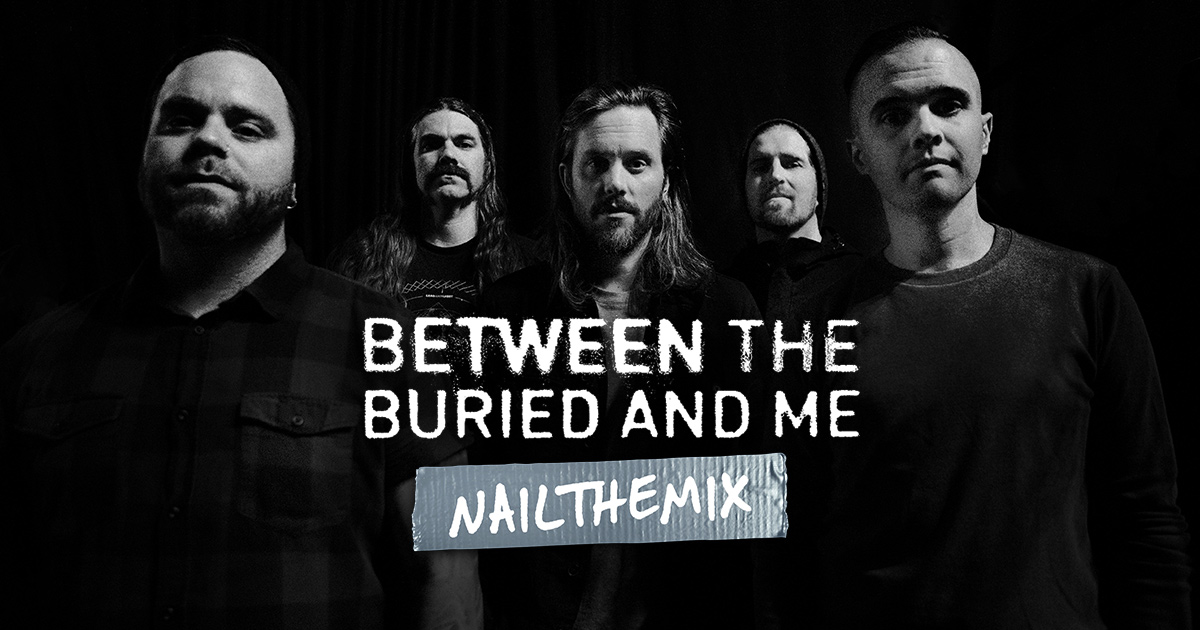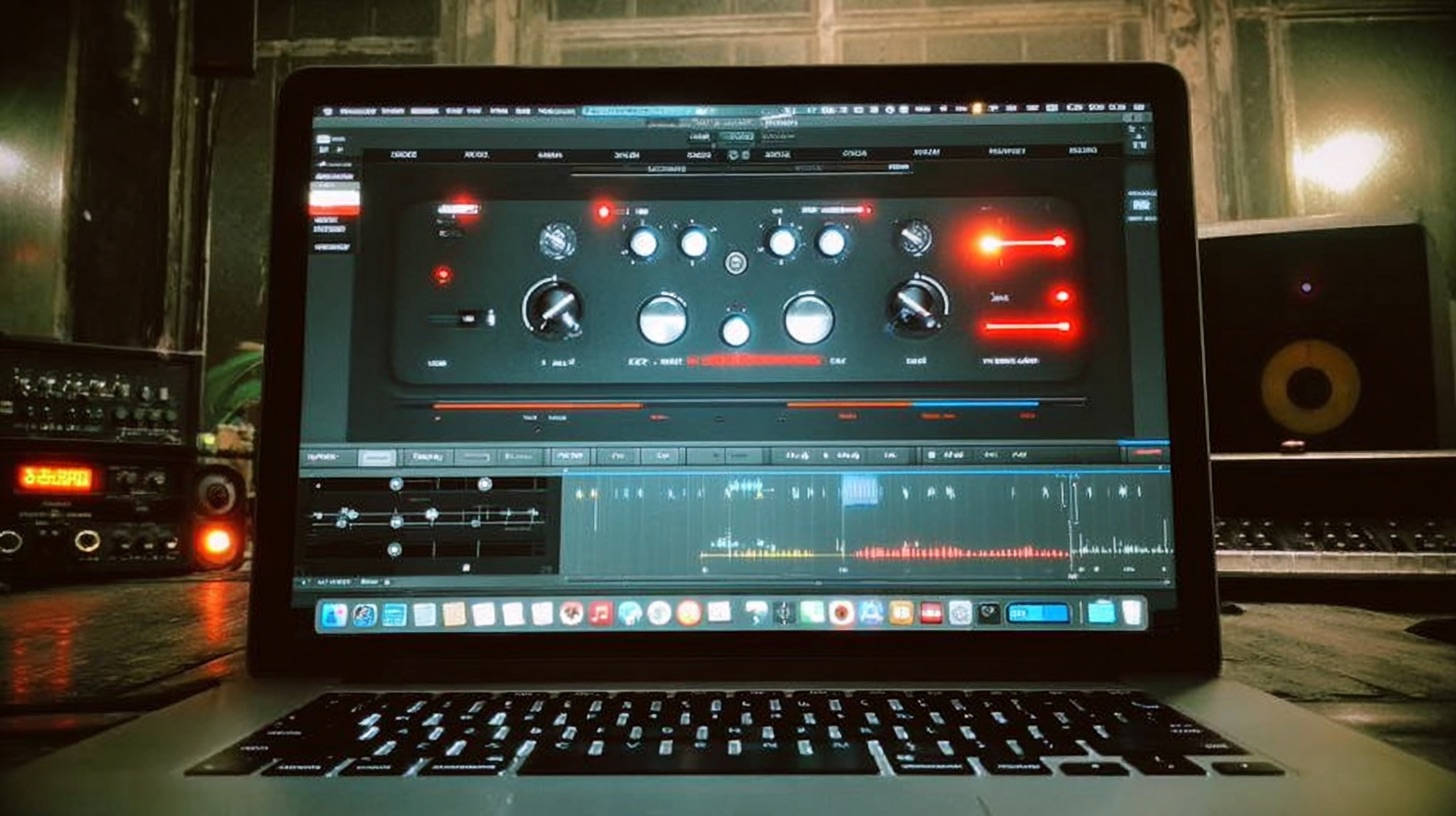
Mixing Dayseeker’s “Sleeptalk”: A Modern Metalcore Session Breakdown
Nail The Mix Staff
Let’s be real: modern metalcore is a masterclass in sonic balance. It’s not just about crushing riffs anymore. It’s about weaving those riffs with massive pop hooks, intricate electronic layers, and vocals that can soar one moment and gut-punch you the next. A perfect example? Dayseeker’s massive track, “Sleeptalk.”
When you get to peel back the layers on a production like this, you see the brilliant architecture holding it all up. Thanks to Nail The Mix, we got a look at the raw multi-tracks for “Sleeptalk,” produced by the incredible Daniel Braunstein (Spiritbox, Volumes) and mixed by the legendary Henrik Udd (Architects, Bring Me The Horizon).
So, let’s break down what makes this session tick, from the hybrid drums to the mountain of vocals.
The Foundation: Drums & Bass That Hit
Before you even get to the guitars, the low-end needs to be rock-solid. The approach for “Sleeptalk” is a perfect example of a modern, professional workflow.
The Hybrid Drum Kit Approach
Right away, you notice something interesting in the drum tracks. The snare, overheads, and cymbals all sound like a beautifully recorded acoustic kit. But the kick drum? That’s pure, clean, processed punch. This points to a hybrid approach where the kick was likely recorded with a trigger or programmed entirely separately.
Why do producers do this?
-
- Consistency: A sampled kick will hit with the exact same velocity and tone every single time, providing an unshakable foundation for the track. No bleed, no weird resonant notes, just pure power.
- Speed: Dialing in a modern, punchy kick sound can take ages with a raw acoustic track. Starting with a great sample gets you 90% of the way there instantly.
- Control: It separates the low-end impact of the kick from the rest of the kit, making it easier to process and balance against the bass and heavy guitars. Gluing the sampled kick to the live snare often involves some clever bus compression to make them feel like a single cohesive unit.
Crafting the Guitar Wall: The Art of the Quad Track
Okay, let’s talk guitars. The session reveals that the rhythm tones were crafted with a Kemper and, more importantly, they are quad-tracked. But it’s not just four copies of the same part; it’s a more sophisticated layering technique.
Kemper Tones & The Blending Philosophy
The session contains four rhythm guitar tracks, likely two distinct pairs. This is a common technique for building a massive, complex guitar sound. Instead of just recording one tone left and right and then duplicating it, producers like Braunstein will craft two different complementary tones.
Think of it like this:
-
-
- Pair 1 (Left/Right): This might be a more mid-focused tone. Think of the classic aggressive, cutting sound that gives the guitar its bite and presence. It’s the tone that cuts through the mix.
- Pair 2 (Left/Right): This second pair could be a tone with more low-mid power and a slightly smoother top end. It adds the weight, thickness, and “chug” to the riff.
-
When you blend these two distinct tones, you get a sound that is both huge and detailed—something you can’t achieve with a single amp profile. It’s a form of tonal shaping before you even touch a plugin. Of course, once you have this foundation, you can apply more surgical EQ strategies to make it sit perfectly in the mix.
Beyond the Riffs: Synths, Layers, and Production Candy
What truly sets modern bands like Dayseeker apart is the seamless integration of electronic elements. The “Sleeptalk” session is loaded with arpeggios, pianos, shakers, risers, and impacts.
One of the standout elements is a monstrously deep synth bass that appears in key sections. This is where mixing gets tricky. You have to balance that powerful, often stereo, sub-bass against mono bass guitar and a wall of guitars without turning the low-end into a muddy mess. Nailing this relationship is one of the biggest challenges in modern production, and when you get it right, the impact is immense.
It’s also worth noting how clean and organized the entire session is. Every track is clearly labeled, and every audio region is tidied up with clean edits and uniform fades. This isn’t just for looks; a tidy session makes for a faster, more creative workflow and is a hallmark of a true pro.
The Vocal Mountain: Stems vs. Raw Layers
If you thought the guitars were complex, wait until you see the vocals. Daniel Braunstein built a fortress of vocal tracks—we’re talking 40+ layers of harmonies, doubles, and ad-libs. For a mixer, that can be overwhelming.
That’s why the session cleverly includes both the raw vocal tracks AND a set of pre-mixed vocal stems. This is brilliant for a couple of reasons:
-
-
- A Producer’s Starting Point: The stems give the mixer (in this case, Henrik Udd) a clear idea of the producer’s vision for the vocal blend.
- Flexibility and Control: If you want to get your hands dirty, you have every single one of the 40+ raw tracks to re-balance, pan, and process to your heart’s content. If you want a faster workflow, you can use the stems as your foundation.
-
Dayseeker on Nail The Mix
Henrik Udd mixes "Sleeptalk"
Get the Session
Mix “Sleeptalk” Yourself
Reading about blending quad-tracked Kemper tones and balancing synth sub-bass is one thing. But what if you could actually do it yourself, with the very same tracks the pros used?
That’s exactly what Nail The Mix is all about. You can get your hands on the complete multi-track session for Dayseeker’s “Sleeptalk” and watch Henrik Udd walk you through his entire mixing process, from setting initial faders to final automation. You’ll see exactly how he tames the low-end, glues the guitars, and makes those vocals shine.
If you’re ready to move beyond presets and learn how world-class records are really made, this is your chance. Download the Dayseeker multi-tracks now and start building your own massive modern metalcore mix. See how your choices compare to one of the best mixers in the game and take your skills to the next level. For more in-depth training on crafting a pro sound from the ground up, check out our Fast Track on Unlocking Your Sound.







